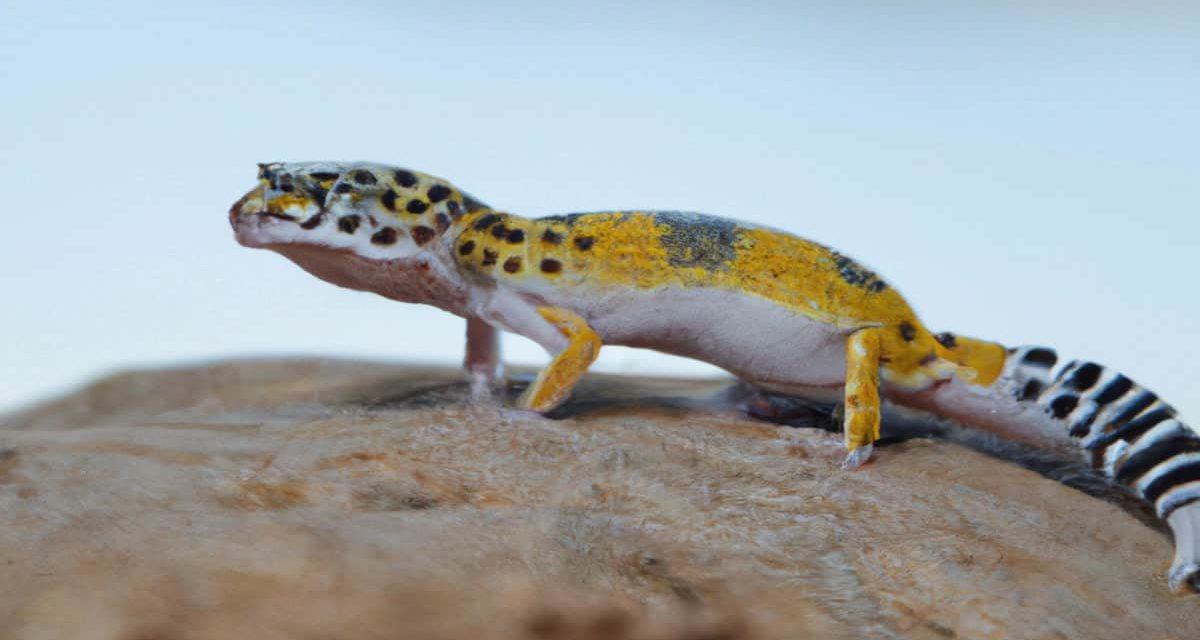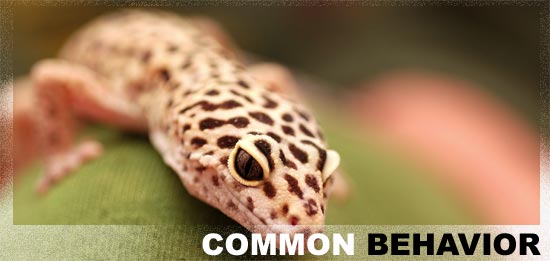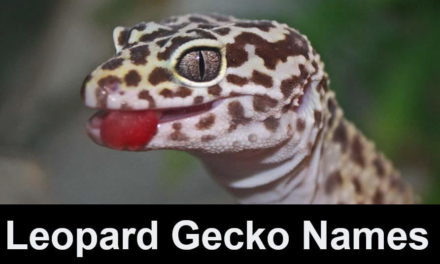
Get The Quick Facts:
- Leopard geckos have a lifespan of up to 15 years in the wild and up to 20 years as pets. The average lifespan is slightly shorter than both of these, with wild geckos typically living shorter by 3-5 years. The lifespan varies depending on factors such as environment, diet, and general care. To ensure a longer lifespan, pet owners should provide a healthy diet, proper lighting and temperature, and regular veterinary check-ups.
- Leopard geckos are a good choice for first-time reptile owners. They can tolerate beginner mistakes and live a long time with proper care. Factors that impact their lifespan include enclosure size, diet, temperature, and hygiene. Captive geckos can live up to 30 years with proper care. Male geckos are usually territorial and need plenty of room to roam. Female geckos have a shorter lifespan of around 10-15 years due to the energy-intensive process of developing eggs.
- Leopard geckos are native to arid regions of Afghanistan, Pakistan, Iran, and India. They have adapted to harsh environments and can thrive in captivity. Predators such as larger reptiles, birds, and mammals pose a threat to their survival in the wild. Diseases also play a role in their lifespan without regular veterinary care in captivity.
- Leopard geckos are small creatures, averaging from 6 to 9 inches long and can live into their late 20s or early 30s. They have different life stages and over 100 different morph types, each with their unique characteristics and requirements. A proper care regimen and habitat setup are essential in ensuring their longevity. Providing a well-maintained tank with appropriate temperature, lighting, and substrate, along with a nutrient-rich diet and supplements, will help to keep leopard geckos alive and thriving.
Let’s Get Into The Detail
Leopard geckos are one of the most popular reptile pets in the world, known for their unique appearance and manageable size. They have a lifespan of 15-20 years. In this section, we will introduce you to these fascinating creatures and provide an overview of their lifespan. Get ready to learn more about the enchanting world of leopard geckos and how long they live! 🦎🌎
How Long Do Leopard Geckos Live?
Leopard geckos do have a very long lifespan for a pet – if given proper care. A balanced diet, temperature regulation, veterinary check-ups, and hygiene practices all contribute to their extended lifespan. To ensure their health and longevity, live insects like crickets or mealworms should be included in their diet, and their habitat should be kept within the range of 75°F-88°F to prevent illnesses.
Male leopard geckos usually have a slightly shorter lifespan due to mating stress and territorial instincts, living for around 8-10 years. Female leopard geckos, on the other hand, can live up to 20 years with proper care and attention. Proper setup and care for leopard geckos include the appropriate tank size, ventilation system, lighting controls, and substrate.
Understanding the unique stages of growth and different morph types is crucial for providing appropriate nutrition supplements at various points in a leopard gecko’s life. Properly caring for your leopard gecko according to its individual needs is key to allowing them to lead long, healthy lives as beloved pets.
It is important to maintain a leopard gecko’s diet and temperature properly to ensure their health and longevity, especially in captivity where they require extra care. Overall, leopard geckos can live a long time with the right care, attention, and setup.
Factors Affecting Leopard Gecko Lifespan
Leopard geckos are fascinating creatures whose lifespan can be influenced by a myriad of factors. In this section, we will explore the specific factors that have a direct impact on the lifespan of leopard geckos. We will discuss the importance of providing a nutritious diet and proper temperature regulation, as well as the significance of regular veterinary check-ups and hygiene practices to maintain optimal health and extend the lifespan of your beloved pet. There are no factual errors in the original text.
Nutritious Diet and Proper Temperature Regulation
Maintaining a nutritious diet and ensuring proper temperature regulation are crucial factors in promoting the longevity of leopard geckos. A well-rounded diet rich in essential nutrients like calcium and vitamin D3 is vital for healthy bone growth and overall well-being. In order to ensure your gecko receives the necessary nutrients, it’s important to offer appropriately sized prey items on a regular basis, such as crickets, mealworms, super worms, and roaches. Additionally, calcium powder can be dusted onto live prey or offered as a supplement within their enclosure for added nutrition.
Temperature regulation is equally important in aiding proper digestion, metabolism, and immune system functioning. Careful monitoring of the enclosure’s temperature is necessary, with heat lamps or under-tank heating pads provided in one area while leaving another end cooler for thermoregulation. It’s important to note that overfeeding and feeding incorrect food can lead to obesity-related issues, while inadequate temperature control can result in lethargy or anorexia. As a result, a well-planned diet with appropriate basking spots is critical to maintaining a healthy weight range.
When considering feeding frequency, it is essential to consider the gecko’s age. Hatchlings require daily feedings, while adults only require 2-3 times weekly feeds. Fresh water is also necessary to maintain their dietary requirements. In conclusion, maintaining a nutritious diet and proper temperature regulation are essential for maximizing the lifespan and well-being of leopard geckos.
Regular Veterinary Check-Ups and Hygiene Practices
Regular veterinary check-ups and proper hygiene practices are essential for maintaining the health and well-being of your leopard gecko. It is highly recommended to schedule regular check-ups with a qualified reptile veterinarian to ensure any potential health issues are caught early on. During these check-ups, the veterinarian will perform a physical examination of your gecko, including checking for signs of illness or injury.
Alongside regular veterinary care, it is necessary to apply proper hygiene practices to keep your leopard gecko healthy. This includes providing a clean enclosure and regularly cleaning any accessories or decor in the tank. By keeping their living environment clean, you can reduce the risk of bacterial infections or other illnesses that could compromise their immune system.
Despite providing proper care and regular check-ups, leopard geckos may still experience health issues as they age. Just like we all do! As they grow older, they become more susceptible to diseases such as metabolic bone disease and respiratory infections. It is crucial to be vigilant in monitoring your gecko’s behavior and taking them to see a veterinarian if you notice any changes in their behavior or appetite. You can even consult a vet online if you have trouble finding one locally or getting a quick appointment.
Male and Female Leopard Geckos’ Lifespans
Leopard geckos have a unique lifespan which varies according to their gender (how to tell their gender). The longevity of male and female leopard geckos can be influenced by several factors such as diet, genetics, and living conditions. The following table presents the average lifespan of male and female leopard geckos based on the provided factual data. The lifespan may vary depending on the above-mentioned factors.
| Gender | Average Lifespan |
|---|---|
| Male | 8 to 10 years |
| Female | 15 to 20 years |
Leopard geckos are known for their exceptional ability to regenerate their lost tails, but this ability does not necessarily prolong their lifespan if their tails get injured or severed due to some reason. To ensure the best possible health for your leopard geckos, provide them with a balanced diet, proper shelter, and hygienic surroundings. Don’t miss out on the chance to witness these fascinating creatures thrive for years to come with good care and attention.
Lifespan of Leopard Geckos in Different Environments
Leopard geckos have varying lifespans depending on the environment they inhabit. Different factors, including temperature, diet, and habitat, impact their longevity. In captivity, leopard geckos can live for up to 10 to 20 years, which is longer than those in their natural habitat, where lifespan only ranges from 8 to 10 years.
Temperature is a vital factor that affects their lifespan. These cold-blooded creatures rely on their surroundings’ temperature, so they need a suitable temperature range to not shorten their lifespan. If the temperature is too hot or too cold, it can impact their health.
Diet is another crucial aspect that affects leopard geckos’ longevity. They require a varied diet of insects and small invertebrates to attain the necessary nutrients for survival. Feeding them a balanced diet may increase their lifespan, while a monotonous diet may affect their lifespan negatively.
Finally, habitat plays a significant role in their lifespan. In captivity, leopard geckos live in appropriate environments, optimized to their needs. However, natural habitats pose threats such as predators and harsh environmental conditions that may affect leopard geckos’ lifespan.
Proper Care and Habitat Setup for Leopard Geckos
Every pet owner wants their animal companion to be healthy and happy, and leopard gecko enthusiasts are no exception. In this section, we’ll cover the basic requirements for creating a proper habitat for leopard geckos. From tank size to temperature regulation, we’ll explore the elements that are essential for maintaining a healthy and thriving pet. Additionally, we’ll dive into the dietary needs and supplements that are necessary for a balanced and nutritious meal plan. With these foundations in place, you can feel confident that you are providing the best possible care for your leopard gecko.
Tank Size, Ventilation, and Temperature Regulation
Keeping leopard geckos in the right tank size, with proper ventilation and temperature regulation is crucial for their well-being and longevity. A suitable environment, including the appropriate tank size, adequate ventilation levels, and accurate temperature regulation, can ensure a thriving habitat for your leopard gecko. It is essential to provide specific tank sizes for leopard geckos at each stage of life, including hatchlings requiring a 10-gallon tank, juveniles requiring a 20-gallon tank, and adult leopard geckos requiring a 30-40 gallon tank, as outlined in the table below.
| Age of Leopard Gecko | Minimum Tank Size |
|---|---|
| Hatchling | 10 gallon |
| Juvenile | 20 gallon |
| Adult | 30-40 gallon |
Temperatures must remain within specific ranges for each time of day and night, with different areas in the tank varying in temperature replication of what this species would experience if living outdoors, including both hot and cool areas. All of these considerations, including good ventilation levels, are crucial to regulate these temperatures effectively and keep airflow in check without causing any harm to your leopard gecko.
Properly regulating tank size, ventilation levels, temperature, and dietary requirements will offer several benefits for your pet beyond mere survival, such as good health, activity levels, and a happy, well-cared-for pet with a full and enjoyable life. For leopard geckos, a balanced diet and proper supplementation are also crucial for their overall wellbeing. Remember, you are what you eat, and providing a balanced diet will help keep your leopard gecko in optimal health.
Read more in Creating Your Ideal Leopard Gecko Enclosure Design.
Dietary Requirements and Supplements
Leopard geckos have specific dietary requirements and supplement needs to maintain their health and wellbeing. A well-balanced diet is crucial, and this can be achieved through a variety of insects such as crickets, mealworms, and waxworms, which provide essential nutrients like calcium, vitamins, and protein. Gut-loading the insects and dusting them with calcium and vitamin D3 can also improve absorption. Fresh water should be provided daily to ensure hydration.
Supplementing the leopard geckos’ diet is equally important. Calcium and vitamins should be administered at least twice a week or as advised by a veterinarian. This is particularly important to prevent metabolic bone disease, which can arise from inadequate nutrition or lack of UVB lighting exposure.
Female leopard geckos require even more calcium supplementation to prevent egg-binding during the breeding season. They may also need a moistened laybox with substrate to ease egg-laying. However, it’s important to avoid over-supplementing vitamins as excessive consumption can lead to toxicity.
Overall, with the right dietary requirements and supplements, leopard geckos’ longevity and health can be well-maintained.
Conclusion: Importance of Considering Leopard Gecko Lifespan Before Becoming an Owner
As a leo owner, it is vital to understand their lifespan, which can last for over 20 years in captivity. This fact makes owning a leopard gecko a long-term commitment that cannot be taken lightly. Leos will tend to greatly outlive most other common pets like cats, dogs, and rabbits for example.
To prepare for the unique challenges that come with keeping a leopard gecko for 20 years, owners must understand their dietary needs, provide adequate veterinary care, and create a suitable environment to meet their physical and social needs. So it’s crucial to not only know the typical lifespan of a leopard gecko but also the potential challenges that will arise over the years.
Some Facts About Leopard Gecko Lifespan:
- Leopard geckos can live up to 15 years in the wild and up to 20 years as pets.
- The average lifespan for a wild leopard gecko is slightly shorter by 3-5 years compared to those in captivity.
- Pet owners can help their geckos live longer by providing a healthy diet, proper lighting and temperature, and regular veterinary check-ups.
- The average lifespan of a pet leopard gecko is between 10 and 20 years.
- Captive geckos can live up to 30 years with proper care.
- Factors that impact lifespan include enclosure size, diet, temperature, and hygiene.
- Female leopard geckos have a slightly shorter lifespan due to the energy-intensive process of developing eggs.
- Wild leopard geckos typically have a lifespan of 3 to 8 years.
- Leopard geckos are native to arid regions of Afghanistan, Pakistan, Iran, and India.
- The oldest recorded male leopard gecko lived to be 28 years old.
- Buying a leopard gecko is a long-term commitment due to their potential lifespan of up to 20 years or more with proper care.
Common Questions About How Long Leopard Geckos Live
What is the average lifespan of a leopard gecko?
The average lifespan of a leopard gecko is between 10 to 20 years in captivity. In the wild, they can live up to 15 years, but their average lifespan is slightly shorter, typically 3 to 5 years.
What factors impact a leopard gecko’s lifespan?
Enclosure size, diet, temperature regulation, and hygiene all play a role in a leopard gecko’s lifespan. Providing proper husbandry, including a healthy diet, proper lighting, and temperature regulation, as well as regular veterinary check-ups can help a gecko live longer.
Can leopard geckos live longer in captivity?
Yes, with proper care, including a balanced diet, proper lighting, and temperature regulation, captive geckos can live up to 30 years.
Do male and female geckos have different lifespans?
Yes, male leopard geckos typically live longer than females, with a lifespan of 15 to 20 years. Females have a slightly shorter lifespan of 10 to 15 years due to the strains of breeding and egg laying.













